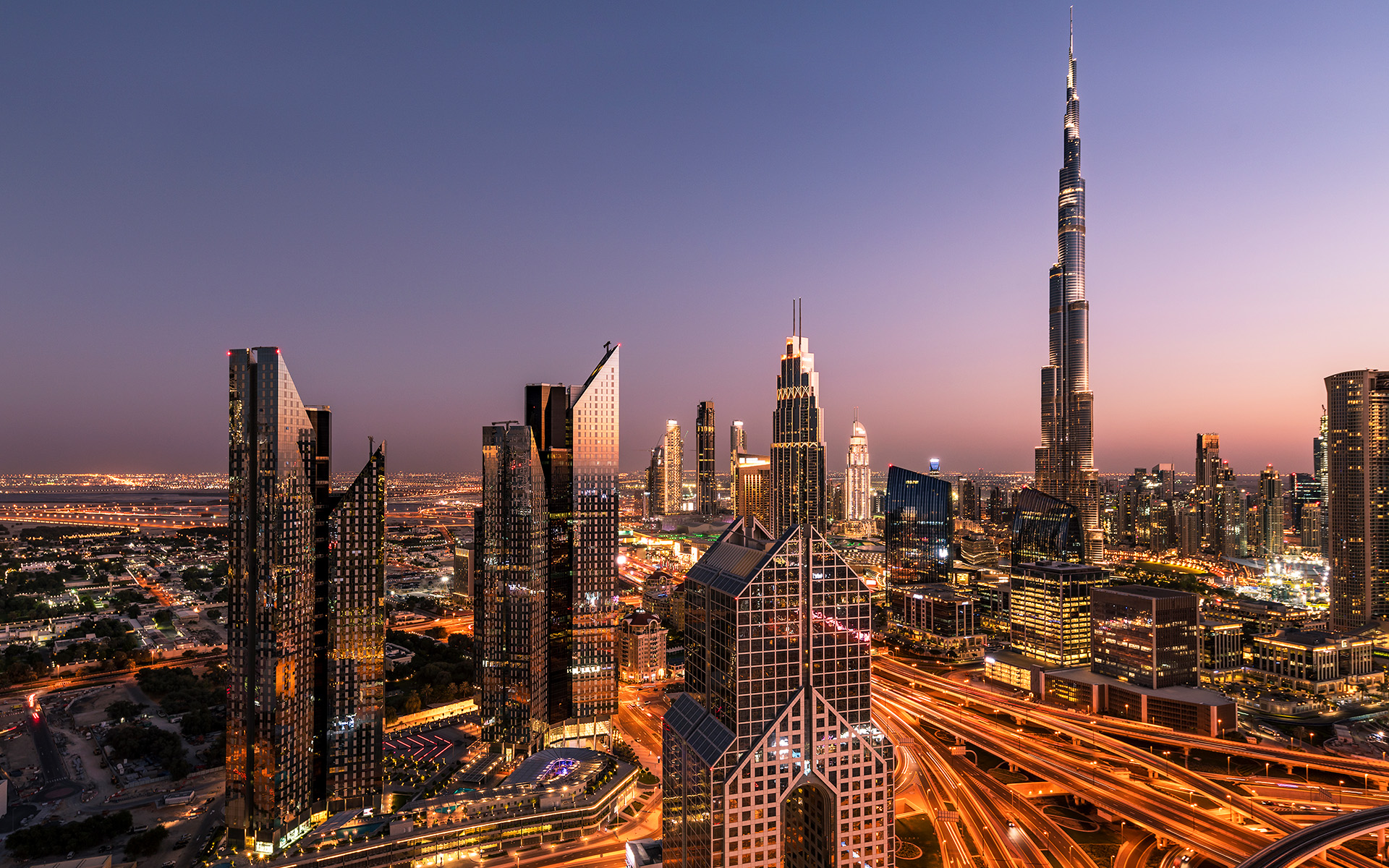Dubai is a major regional and international mobility hub that will benefit further from global growth rebalancing and supply chain shifts.
City Class Score
| Commercial Hubs | |
| Export Champions | |
| Mobility Connectors | |
| Climate Resilient |
Corporate HQs, MNC presence, branded outlets, hotels, manufacturing, start-up ecosystem,
transport linkages, population, and income.
Go to the class information
Manufacturing, industrial parks, export share and share change by category, air and port
infrastructure, freight time to market, trade agreements, and expert interviews.
Go to the class information
Passenger traffic, flight connectivity, air-cargo flights, port infrastructure, container
ship sailings, and major road networks.
Go to the class information
Coastal and river flooding, extreme rain, extreme heat and humidity, cyclones, and water
scarcity.
Go to the class information
The view from Dubai’s Burj Khalifa at night is jawdropping. From the 124th floor
of the world’s tallest building, visitors can gaze across the entire emirate, even catching a
glimpse of its neighbor, Sharjah. Look to the north and you can see the shimmering spectacle of
Dubai’s international airport, a dazzling galaxy of white, red, and yellow lights twinkling in the
distance, guiding flights arriving from far-off places like New York and Beijing. Sheikh Zayed Road,
456 meters below, is unmistakable as it slices through the city, bustling with commuter traffic. As
it stretches onward, the brightly lit cranes of Jebel Ali Port come into view. While the Burj
Khalifa’s viewing deck is undeniably a tourist hotspot, it also exemplifies Dubai’s triumph as a
global mobility hub.
This dynamic city will benefit from the megatrends reshaping
opportunities across our 1,500 cities. The shift in global supply chains is nudging production
closer to the emirate, particularly factory relocations to India and possibly, in the long run, to
select countries in Africa. The growth rebalancing across the region, highlighted by India’s recent
economic ascent and the increasing adoption of national industrial policies by Gulf Cooperation
Council member countries, is further enhancing Dubai’s international mobility, evidenced by rising
cargo and passenger flows.
Dubai’s reputation as a global aviation hub is well known. The
emirate ranks alongside Istanbul
and Shanghai
in terms of total seat capacity, without the advantage of a large domestic market like those two
cities. Last year, the airport connected more than 250 destinations, according to our proprietary
data, and welcomed more than 85 million passengers, many of whom were headed to cities on our list
of 1,500. Visting tourists also are increasing in number, reaching 17 million in 2023. Without
Dubai, connectivity between cities in Africa, the Middle East, Asia, and even Latin America would be
significantly weaker.
The emirate is a vital hub for cargo as well as passengers. Jebel Ali
Port ranks among the world’s top 20, serving as a major transshipment center for countries of the
Gulf Cooperation Council, the Indian subcontinent, and Africa. Owned by Dubaibased DP World, the
port is part of an expanding global network that includes 18 ports and terminals across Asia Pacific
and ensures that the emirate is connected to a region that accounts for 40% of global trade. Dubai
also is a key international air cargo hub. Once the city’s vast new airport, Al Maktoum
International, is fully constructed, the emirate’s role in transshipping high-value goods throughout
the region will only grow further.

